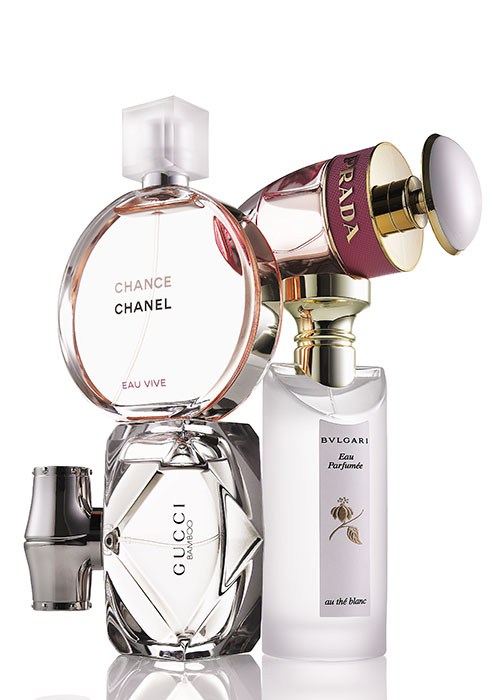Everything you need to know about fragrance

By Annie Millar
Better Homes & Gardens Better Homes and Gardens Beauty and Lifestyle Editor / May 25 2017

The beginner’s guide to perfume

By Annie Millar
Better Homes & Gardens Better Homes and Gardens Beauty and Lifestyle Editor / May 25 2017
The beginner’s guide to perfume
Find a scent you like. Buy it. Wear it. Repeat. Sounds simple, right? But like clothes, your scent should change with the seasons – warm and rich in winter, light and fresh in summer. From the difference between an EDT and an EDP to where to apply your perfume for the best results, here are the answers to five common questions about perfume.
What are the different scent categories?
Most fragrances can be divided into one of four categories:
Fresh greens are scents suggestive of nature. They smell ‘clean’ and suit vibrant sporty types. Good for use during the day.
The woody amber category includes many men’s fragrances but also appeals to women wanting something sensual for the evening.
Fruity florals evoke a sense of innocence and romance – some fruity and zesty, others more floral – they suit classic romantics.
Oriental spice perfumes are similar to woody scents with added floral elements. They’re exotic and evoke a rich, mysterious aura.
How do I try it on?
Selecting a new fragrance is a personal experience that should never be rushed – don’t fall victim to the ‘spray ’n’ dash’! Take the time to try a scent and allow it to settle on your skin. Spritz the inside of your wrist and wait at least 10 minutes for the full fragrance to emerge. Take a discreet whiff every few minutes to experience different notes as they develop.
Where do I apply it?
This depends on the season.
In summer, go for your pulse points – wrists, navel, behind your knees and nape of your neck. If you’re going outdoors, avoid areas exposed to the sun as fragrance can make skin sun-sensitive.
In winter, apply to the pulse points, but use a stronger concentration as layers of clothing smother scent. Try applying fragrance to the lining of outer garments for a lasting effect.
Which concentration is best?
Fragrances contain varying amounts of perfume oil. The higher the concentration, the higher the price, but the longer it lasts.
Eau de cologne contains 5 per cent oil and fades within an hour.
Eau de toilette has 5–15 per cent oil and lasts closer to two hours.
Eau de parfum has 10–20 per cent oil and lasts up to four hours.
Perfume extracts contain 20–40 per cent oil and last up to six hours.
How should I store my perfume?
Fragrances should last you a long time, if you look after them. Keep your perfume bottle in a cool place out of direct light to stop them from spoiling. If you notice a change in its scent, it’s time to replace it.
Main image: Edward Urrutia
Products featured in main: Chanel Chance; Gucci Bamboo; Prada Candy; Bulgari au thé blanc

Annie Millar is a Beauty Expert with more than 30 years experience in the Beauty Industry. Her qualifications include Life Coaching, Makeup Artistry, Beauty Therapy and Secondary Teaching. She is currently the Beauty and Lifestyle Editor for Better Homes and Gardens magazine.
Related tags
perfume /






